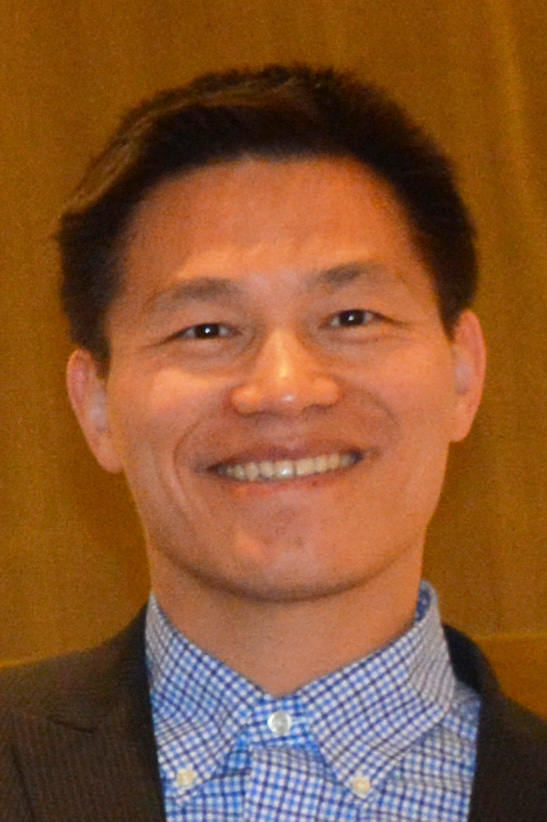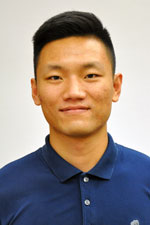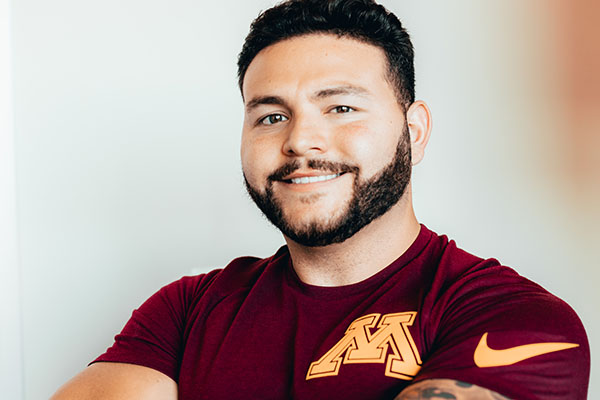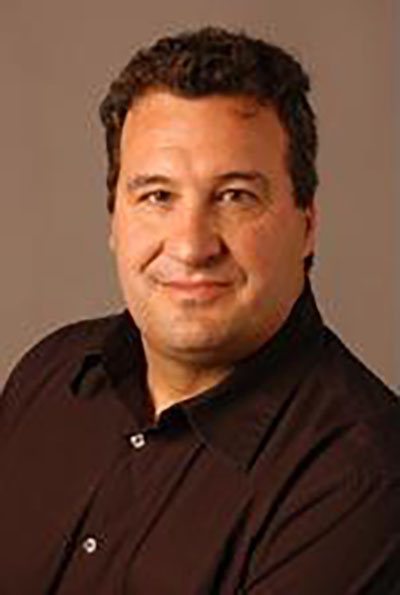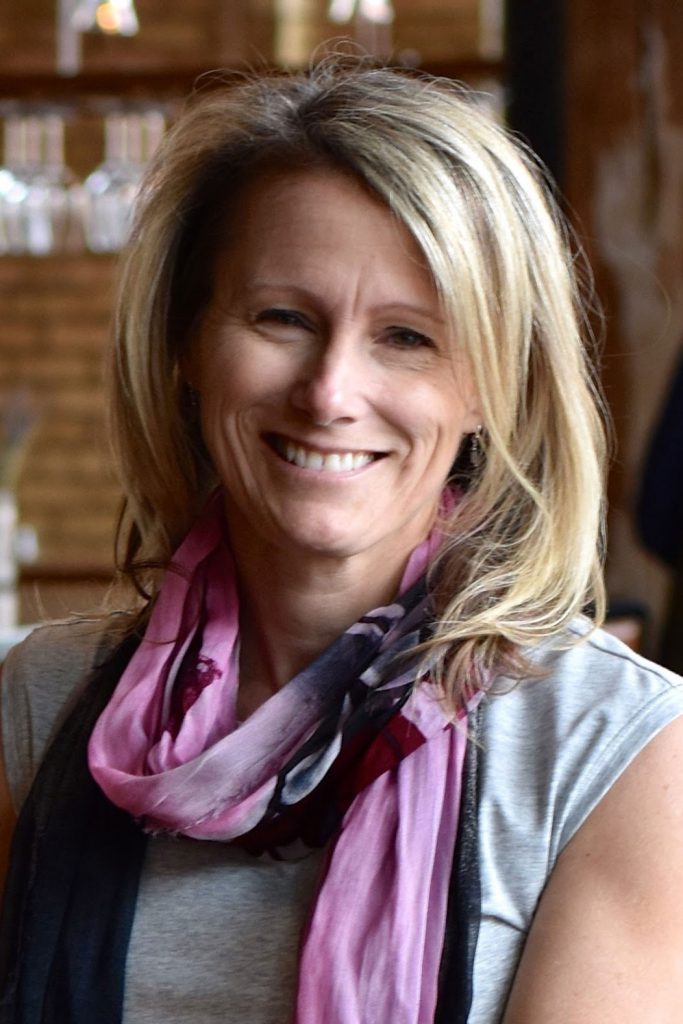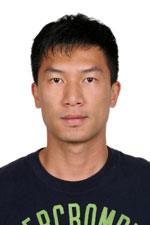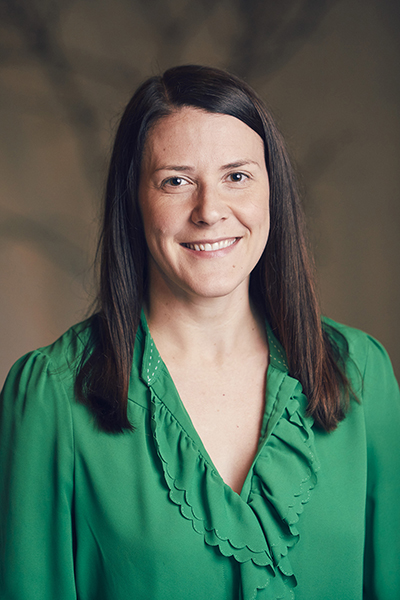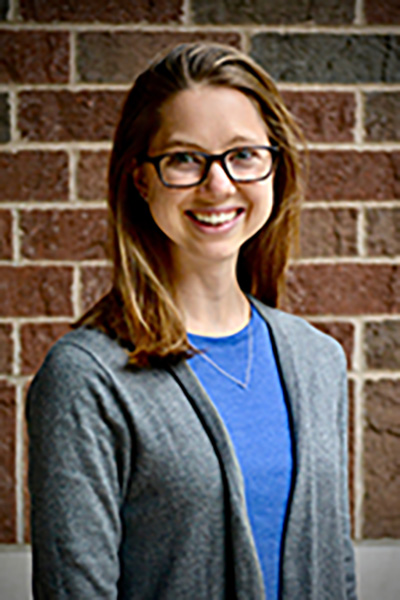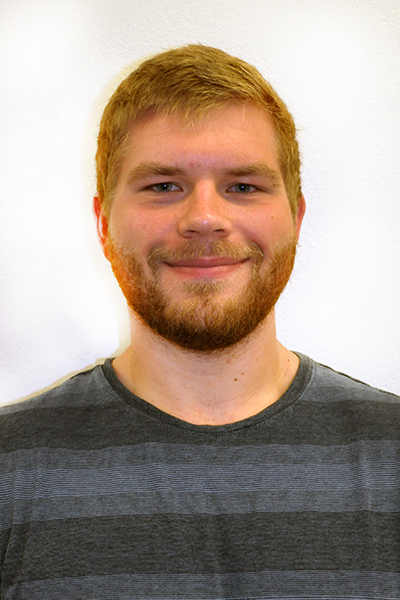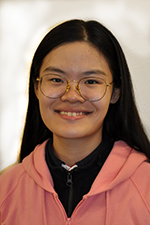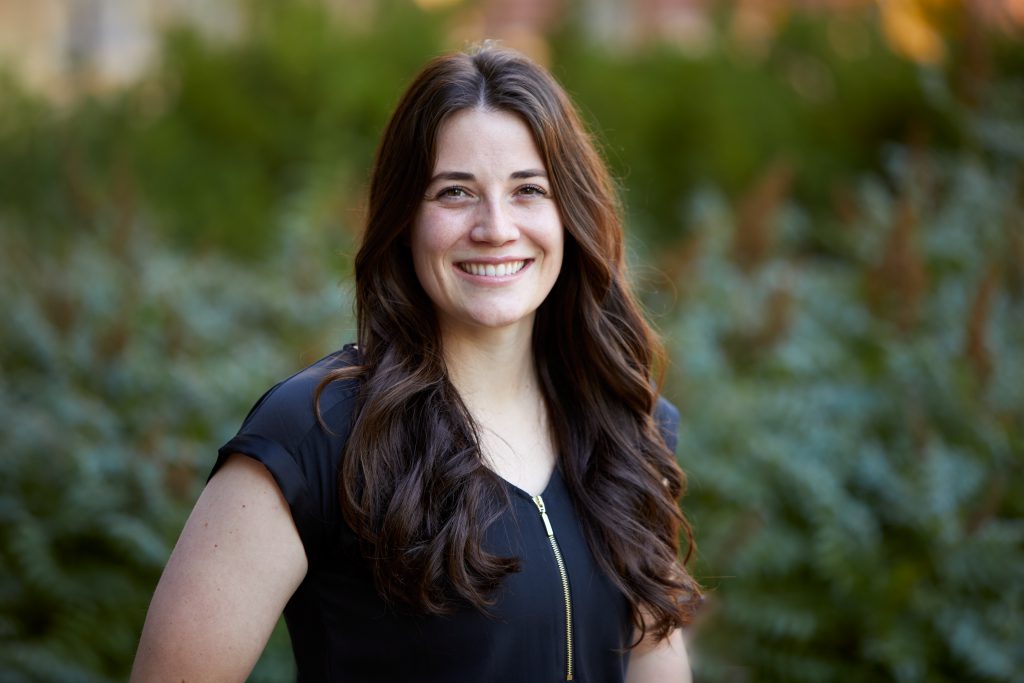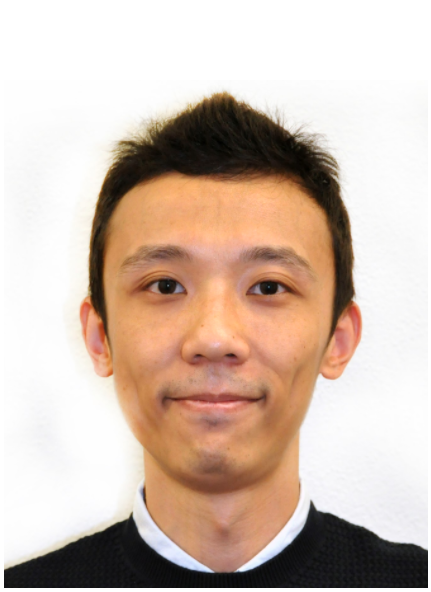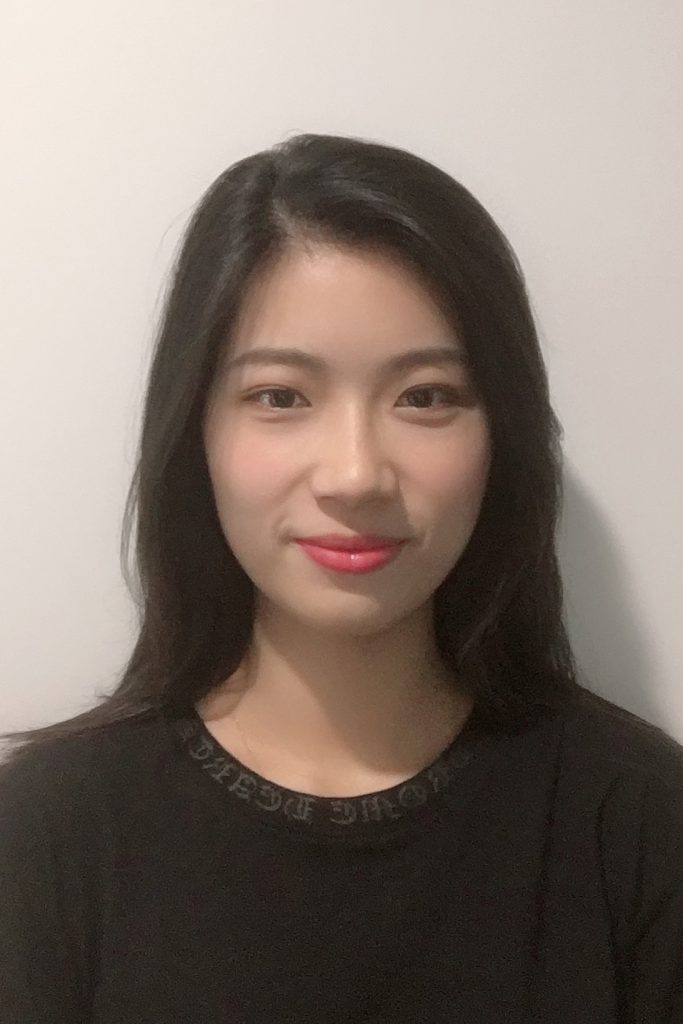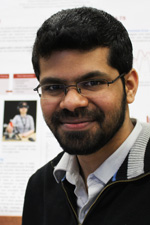Lisa A. Kihl, PhD, associate professor in the School of Kinesiology and director of the Global Institute for Responsible Sport Organizations (GIRSO), was recently appointed as one of the first Sport Integrity Adjuncts at the University of Canberra. The appointment includes working with the interdisciplinary team on the Sport Integrity Research area at UC-RISE. Currently, Dr. Kihl is collabrating on a project that is mapping the local sports clubs and state sport associations to map the their integrity systems and identify integrity risks and strengths.
PAEL team presents multiple research abstracts at the 2021 ACSM Annual Conference
The School of Kinesiology’s Physical Activity Epidemiology Laboratory (PAEL), directed by Zan Gao, PhD, recently presented three research abstracts at the 2021 American College of Sports Medicine annual meeting. Topics covered a broad spectrum of physical activity promotion research presented by lead authors, DJ McDonough (PhD candidate), Wenxi Liu, (PhD candidate), and Suryeon Ryu (1st year PhD student). Due to COVID-19, the conference was held virtually this year. A list of the presentations are as follows:
1. McDonough, D., Liu, W., Su, X., & Gao, Z. (2021, June). Association between urban adolescents’ weight status and self-efficacy during varying type exergaming. Paper presented at the virtual annual meeting of American College of Sports Medicine.
2. Liu, W., Li, X., & Gao, Z. (2021, June). Comparison between dance-based exergaming and aerobic dance on young adults’ physiological and psychological outcomes. Paper presented at the virtual annual meeting of American College of Sports Medicine.
3. Ryu, S., Lee, J., Liu, W., McDonough, D., & Gao, Z. (2021, June). Investigating relationships among preschool children’s perceived competence, motor skills and physical activity: A cross-lagged panel model. Paper presented at the virtual annual meeting of American College of Sports Medicine.
Dengel publishes on muscle density vs quality
Don Dengel, PhD, professor of kinesiology and director of the Laboratory of Integrative Human Physiology is the author of recent blog post entitled “Is Muscle Density The Same as Muscle Quality?” The blog explores muscle density and how is differs from muscle quantity. Additionally, the blog looks at the limitations in technology that make the measurement of muscle density difficult.
Read the full blog feature here.
Meet Honors Graduate, Brendan O’Brien
Brendan O’Brien graduated from the School of Kinesiology Honors Program this past spring with a dual degree in sport management and journalism. Read more about O’Brien’s academic experience and his future plans below.
Can you tell us a bit about yourself?

I grew up in New Ulm, Minnesota, and I’m the youngest of two siblings. From a young age, I was always drawn to sports because I was naturally competitive and self motivated. I started swimming competitively when I was 10. I then went on to play football starting in sixth grade and continuing that throughout high school. I was really fortunate enough to be a part of a school with a great athletics program. Not only was I able to learn a lot about football, but I was able to gain a lot of valuable life skills.
What led you to sports management?
After high school and throughout my college career, I have continued to stay in shape and take part in various sports teams. Overall, there have been a lot of people who have made an impact on my life through sports. Because of that, I knew I wanted to pursue a career in sports. At first, I wasn’t quite sure what that was, but after taking an introductory course in sports management, I knew I was in the right place.
Did you hold any internships/ work positions?
Yes! I’ve held several positions throughout college. I first worked for the Minnesota Twins in their call center. From there, I was able to network and land another job within their sales department as an intern. After that, I worked as a sports reporter for the Minnesota Daily. Finally, last summer, I had an internship with the American Junior Golf Association. In that role I traveled around a region of the country and ran golf tournaments. Through each of these positions, I was able to gain valuable experience to put on my resume, which has been a great asset when applying to jobs.

What was your experience like as a double major?
One thing I really enjoyed about having a double major was the lack of overlap between my classes. It was nice to learn about two completely different topics and then be able to come back and relate them to one another. In my last semester, I took sports journalism and that was really the only course that I found to overlap with my sports management classes. I really enjoyed having my sports management classes and journalism classes being separate from each other. It was great to have courses that touched on sports, but also be in classes that taught me more about the technical skills behind reporting.
How did your experience in the School of Kinesiology prepare you for post-grad life?
My experience in the School of Kinesiology taught me a lot about effective communication. Whether it’s through my classes or with my advisors, I learned a lot about being able to ask the right questions. I also learned that it’s okay to ask for help. Being a student during COVID was no easy task, especially when working on my honors thesis. Time management can be difficult when working remotely, so I was a bit worried about finding the time to get my thesis done. But staying in open communication with my advisors really helped me. They helped keep me organized.
Tell us about your honors thesis!
Growing up, I watched a lot of sports news and entertainment shows, not just the games. I noticed that prior to college, I watched the programs on TV. Once I got to college that changed. I no longer had the free time or a TV to watch those shows. So, I resorted to watching 60-second clips on Twitter and Instagram. This is how I came up with the idea behind my thesis. The title of the thesis was “Social Media and Sport: How Sports Television Networks use Instagram.” During a three-day period, I examined different Instagram posts from television programs associated with ESPN and Fox Sports. I was interested in seeing how these sports entertainment and news shows utilized social media to promote their programming.
Thank you for sharing your college experience with us, Brendan! The School wishes you all the best in your future endeavors.
MPR interviews LaVoi on athletes and mental health
Nicole M. LaVoi PhD, Tucker Center director and senior lecturer in the School of Kinesiology, was recently interviewed on MPR News with Angela Davis. The segment, “What Naomi Osaka can teach us about athletes and mental health” covered Naomi Osaka’s decision to pull out of the French Open after not appearing for mandatory press conferences. In the interview, LaVoi comments on pressures faced by athletes and how to better support their mental health.
Listen to the full interview here.
Dengel presents at the 2021 North American Artery Meeting
On May 22, 2021, Donald R. Dengel, PhD, professor of kinesiology and director of the Laboratory of Integrative Human Physiology (LIHP), presented at the 2021 North American Artery Meeting. The title of Dr. Dengel’s talk was “Childhood Cancer: The Effect of Cancer Treatments on Vascular Function.”
Learn more about this year’s conference here.
Gao Receives 2021 International Chinese Society Exceptional Service Award
The School of Kinesiology‘s Zan Gao, PhD, Director of the Physical Activity Epidemiology Laboratory (PAEL), recently received the 2021 International Chinese Society for Physical Activities and Health (ICSPAH) Exceptional Service Award.
The ICSPAH Exceptional Service Award is for an active ICSPAH regular or life member for at least three years by April 2021, who has made considerable contribution to ICSPAH in service (more specifically, who has served the organization or played leadership roles with substantial work in the executive council [committee], standing committees, or task-force groups, and/or served as a keynote presenter with significant contribution to promote the organization worldwide and support the growth of the ICSPAH). Only one ICSPAH Exceptional Service Award can be given each year. Gao served as the President of ICSPAH in 2017-2018 and has made tremendous contributions to this Society in the past 15 years. His Award will be formally recognized at the Annual General Assembly during the ICSPAH virtual conference, May 28-29, 2021.
PAEL researchers publish in Journal of Clinical Medicine

The School of Kinesiology’s Physical Activity Epidemiology Laboratory (PAEL) researchers Daphne S. Blount, Daniel J. McDonough, PhD candidate, and Zan Gao, PhD, director of PAEL, have published a research article titled “A systematic review of physiological, cognitive, and emotional outcomes of wearable health technology interventions among breast cancer survivors” in the Journal of Clinical Medicine.
Daphne S. Blount is a senior undergraduate student from College of Biological Science and has served as a volunteer at PAEL since 2019. This systematic review synthesized all randomized controlled trials (RCTs) and controlled trials examining the effects of wearable health technology-based physical activity interventions on physiological, cognitive, and emotional outcomes in breast cancer survivors (BCS). Sixty-six studies were identified and 14 were included in the review. Most of the observed effects were statistically significant and those which employed multi-component interventions generally yielded greater effects.
Their research found that the use of wearable health technology reduced sedentary behavior and increased moderate-to-vigorous intensity physical activity. Further, increased moderate-to-vigorous intensity physical activity was observed to be associated with increased perceived cognition and higher cognitive performance. Multiple studies also observed significant improvements in attitude, worry, and anxiety. Overall, findings suggested wearable health technology-based physical activity interventions to be effective for improving physical activity, attitude, and cognitive functions and for reducing sedentary behavior, anxiety, and worry in BCS.
PAEL researchers publish in the International Journal of Environmental Research and Public Health
The School of Kinesiology Physical Activity Epidemiology Laboratory (PAEL) researchers Wenxi Liu, PhD candidate, Nan Zeng, former PhD student, Daniel J. McDonough, PhD candidate, and Zan Gao, PhD, associate professor and Director of PAEL, recently published a research article titled “Relationships between College Students’ Sedentary Behavior, Sleep Quality, and Body Mass Index” in the International Journal of Environmental Research and Public Health.
This study examined the relationships between accelerometer-measured sedentary behaviors, sleep quality, and body mass index in college students. The findings of this study indicated that prolonged sedentary behaviors (e.g., screen viewing, smartphone use, and computer playing) and higher body mass index may link to shorter sleep duration and lower sleep efficiency.
Learn more and read the full article here.
SMPRL lab members attend and present at the Experimental Biology 2021 meeting
Members of the Skeletal Muscle Plasticity and Regeneration Laboratory (SMPRL), led by Sarah Greising, PhD, assistant professor in the School of Kinesiology, will attend and present research at the Experimental Biology meeting, held virtually this year on April 27-30.
Dr. Greising will chair the symposium “Regenerative Rehabilitation: Optimizing the Functional Recovery of Skeletal Muscle.” This symposium brings together speakers who will discuss aspects of regenerative rehabilitation in traumatic musculoskeletal conditions, neuromuscular disorders, and pathologic conditions such as volumetric muscle loss, muscular dystrophy, and peripheral artery disease respectively.
Postdoctoral fellow, Dr. Christiana Raymond-Pope will present a poster, entitled “Whole-Body and Remaining Muscle-Specific Metabolic Function is Limited Following Volumetric Muscle Loss.” This work evaluated the impact of traumatic injury on fuel utilization at the whole-body and muscle fiber specific level. The study is co-authored by SMPRL lab members Alec Basten and Kyle Dalske, and colleagues at the University of Georgia Jennifer McFaline-Figueroa, Tate Hunda, and Dr. Jarrod Call.
Get to know Kevin King, MA, Sport Management teaching specialist
Kevin King, MA, is a teaching specialist for the Sport Management program in the School of Kinesiology. King earned his Bachelor of Science (BS) degree in Organizational Communications from Eastern Michigan University and his Master of Arts (MA) in Sports Administration from Wayne State University, in Detroit, MI. He is now the primary instructor for many of the School’s courses required for the Sport Management BS program.
King’s journey to teaching in higher education has been a winding road, filled with many different experiences both in the sport industry and in others.
“I believe students can relate to me because I have spent a lot of time working in the industry,” King said. “I also can understand and relate to our students’ goals. When I was an undergraduate student I wanted to work in professional sports. Many of our students have that same goal.”
King chose his undergraduate degree in organizational communications because he wanted to be a spokesperson for an NFL team. At the time, sport management programs didn’t exist in many universities.
“I had to network in a different way,” King said. “There weren’t sport management associations or degree programs that brought together the people who were working in the sport industry.”
During and immediately after his undergraduate experience King worked in several internship positions in the sport industry. He worked in the Sport Information Department at the University of Michigan, and was a training camp intern in the team operations department for the Minnesota Vikings. He held intern positions with the Detroit Lions and the Chicago White Sox as well.
“I did three years of internships,” King said. “Not only did this give me a great foundation of sport industry experience and contacts, but I was also able to do it my way—keeping my experiences in the communications and PR field.”
From there, King got his first full-time position with the Tampa Bay Buccaneers in their sales and marketing department.
“I was excited to have a full-time position in the sports industry,” King said. “But, after working there for two years, I realized that I was getting away from what I really wanted to do, which was communications and PR work. I knew I needed to get some solid PR experience, so I moved outside of sports, and took a job at the American Red Cross in Tampa, Fla.”
King spent three years at the American Red Cross where he built his skills and experience in PR. Then, when he chose to move on, he was hired at the Xtreme Football League (XFL) in corporate communications. And that role morphed into being a publicist in the consumer products division with the World Wrestling Entertainment (WWE).
“Honestly, at that point everything felt like it was going really well,” King said. “I still hadn’t considered a career path in higher education.”
A relocation led King back to his home state of Michigan, where he worked with a PR Firm that was promoting a client speaker to Madonna University in Livonia, Michigan. In his interactions with the university, they found out about his background in sport communications and asked him to sit on an advisory curriculum council for their soon-to-be sport management program.
“After I sat on the advisory council they asked me to teach media relations in sports,” King said. “I’d like to say the rest is history. I eventually became the director of their sport management program. I led the program, advised and taught at Madonna, and during that time I was hired as an adjunct professor at the University of Michigan-Ann Arbor, in their sport management program.”
During his time at Madonna, King went back to school and earned his master’s degree in sport administration, providing him with more specific sport management knowledge and allowing him to teach higher level courses.
“If someone would have told me as an undergraduate student that I would end up teaching in higher education I would have said they were crazy,” King said. “This career path wasn’t in my dream of possible options. But I saw an opportunity, and I took it. I tell students all the time to never overlook an opportunity, even if it’s not something they would have originally thought of.”
King teaches many courses in the School of Kinesiology’s Sport Management Program, including Introduction to Sport Management, Organization and Management of Sport, and Business of Sport, to name just a few. King said his favorite course to teach is Organization and Management of Sport because it imparts lessons and life skills that students can use regardless of their future careers.
“We cover core values, company mission statements, culture, diversity in the workplace, leadership, emotional intelligence, and more,” King said. “All of those skills are relevant regardless where a student might go. No matter what they do, this course will add value to their lives.”
King’s advice to students considering a sport management degree?
“This industry is broad, and incredibly competitive. Explore what you’re good at, take classes, and get experience doing that specific thing. Never say you’ll do anything, because people will take advantage of that. Identify your skills and shape your experience to match those.”
The School is incredibly proud to have Kevin as a lecturer in the Sport Management Program! Thank you for imparting knowledge and inspiring students everyday, Kevin.
Barr-Anderson to present in CEHD Scholar Spotlight event: Yoga in the Black Community
Yoga in the Black Community
April 13, 5:00 – 6:00 p.m.
Featuring: Daheia Barr-Anderson, Gail Parker, Jennifer Webb, and Ericka Jones
In the U.S., yoga has become increasingly popular in recent years. Although heavily westernized and white-washed, yoga’s origins not only trace back to India, but this sacred practice has African roots. For centuries, Black people have faced marginalization, discrimination, and social injustice in the U.S. The unjustified deaths of George Floyd, Ahmaud Arbery, Breonna Taylor, and countless other Black lives have created a level of racial and social trauma that few other communities have experienced. Coupled with the physical, mental, financial, and social disparities that exist in the Black community, a collective healing is needed. Many people are drawn to a yoga mat as a means to address imbalance or heal trauma experienced in their lives. Although in the U.S., yoga has the reputation of attracting college-educated, white populations and can be exclusionary to BIPOC communities, yoga has become increasingly popular among Blacks with the growth of Afrocentric yoga (i.e., focusing on Black or African culture), establishment of Black yoga organizations (i.e., Black Yoga Teachers Alliance), and expansion of social media presence of Black yoga practitioners. In this panel discussion, Black researchers and yoga instructors will discuss yoga in the Black community: why is it important to help reclaim health, how can it be used to address trauma and healing in the Black community, and what has been the impact of COVID-19. Register for this event through Zoom.
Recommended reading before attending event:
School of Kinesiology lab research draws press attention
Research from the School of Kinesiology‘s Physical Activity Epidemiology Laboratory (PAEL) about wearable health devices has drawn the attention of multiple news outlets. The original study, “Health wearable devices for weight and BMI reduction in individuals with overweight/obesity and chronic comorbidities: systematic review and network meta-analysis,” was published in the British Journal of Sports Medicine on March 17, 2021. Authors were Daniel J. McDonough, PhD candidate, Xiwen Su, former MS student, and Zan Gao, PhD, Director of PAEL and School of Kinesiology associate professor.
Since publication, 19 unique media outlets have published 24 stories that site the article. Additionally Gao was interviewed in a related article by HealthDay, and McDonough was interviewed for an article by UPI News.
Raymond-Pope publishes about the recovery of anterior cruciate ligament reconstructed female athletes
Christiana Raymond-Pope, PhD, Post-Doctoral Fellow in the Skeletal Muscle Plasticity and Regeneration Laboratory and graduate of the School of Kinesiology, is the lead author of an article entitled “Anterior cruciate ligament reconstructed female athletes exhibit relative muscle dysfunction after return to sport” that was recently published in the International Journal of Sports Medicine.
This study examined the relationship between upper-leg compartmental lean mass, muscle-specific strength, and explosive strength following anterior cruciate ligament reconstruction. One of main findings of this study is that there were significant deficits in muscle mass as well as peak force in the anterior cruciate ligament reconstructed leg versus the non-surgical leg. In addition, the study reported that one year following anterior cruciate ligament reconstruction the surgical leg still demonstrated significant deficits in upper and compartment-leg muscle mass as well as total peak force.
Don Dengel, PhD, a professor in the School of Kinesiology and director of the Laboratory of Integrative Human Physiology, and Tyler Bosch, PhD, a graduate from the School of Kinesiology and researcher for the Dexalytics project, were also co-authors on this article.
Kinesiology’s Sertic receives the Advanced Pathways to Research Program Scholar award
Jacquelyn Sertic, a first-year doctoral student in the School of Kinesiology, received the Advanced Pathways to Research Program Scholar (A-PReP) award from the University’s Clinical Translational Science Institute. The A-PReP is a research training program for doctoral-level professional health sciences students and early-PhD students interested in clinical and translational research.
Awarded students receive funding to participate in a mentored research experience and attend weekly seminars providing a grounding in translational research networking and presentation skills with some of the top researchers at the University. The summer research experience culminates with a poster presentation at the CTSI Annual Poster Session and the opportunity to win a travel award to present at a conference of the student’s choosing.
Sertic plans to use this experience to conduct her proposed research project, examining the role between ankle proprioceptive dysfunction and gait and balance problems in people with Parkinson’s disease. She is a student member of the Human Sensorimotor Control Laboratory, directed by Jürgen Konczak, PhD. Konczak also serves as Sertic’s faculty advisor.
Combining passions to create unique research
In his final semester at the School of Kinesiology, Brian Neff, a Kinesiology Bachelor of Science major and honors student, was awarded an Undergraduate Research Opportunities Program (UROP) grant to help fund his honors thesis research.
“I was first introduced to research working in Dr. Diane Wiese-Bjornstal’s Sports Medicine Psychology Lab,” Neff said. “I worked closely with a graduate student and helped with her project, I really enjoyed it. After that experience I knew I wanted to do my own research.”
And that’s exactly what Neff did. Inspired by his interest in the book “The Body Electric” by Rober O. Becker and his passion for snow sports, he came up with his thesis idea: understanding how chromotherapy might improve alpine skiers performance. He worked to come up with a test that would quantify that. His study plans to measure lower extremity strength and balance performance for skiers, while they are wearing a variety of different colored lenses.
“There was a gap in the literature and understanding of how color therapy might improve or affect a skiers performance,” Neff said. “I thought that this would be especially relevant for skiers. They’re often wearing different goggles and lenses, and skiing in a wide variety of visibility conditions.”
Neff is an avid snowboarder himself and he is particularly interested in athlete performance. He is a certified personal trainer and has spent previous semesters as an intern for Cal Dietz, the associate director of athletic performance for men’s and women’s ice hockey. This thesis question touched on those two major points of interest for Neff, and felt like the perfect fit for his final research project.
“I’ve always been interested in sport performance,” Neff said. “But, there’s not really the same emphasis on strength and performance when you get into extreme sports. I think it’s a missed opportunity.”
So, Neff worked with Chris Lundstrom, PhD, who’s areas of research include endurance training and performance, exercise physiology, and sports science.
“I had taken a few classes with Dr. Lundstrom in the past and really enjoyed them,” Neff said. “I was interested in sport performance and I had volunteered in his lab (The Human Sport Performance Laboratory) briefly. His lab also already has a lot of the equipment I would need to do this study.”
Lundstrom became Neff’s thesis advisor and fellow School of Kinesiology faculty members Sarah Greising, PhD, and Thomas Stoffregen, PhD served as his honors thesis readers.
“Brian has approached this project with immense energy and passion,” Lundstrom said. “It’s so fulfilling to work with students like him who are driven, curious and willing to put in the necessary work required to pursue interesting and novel questions.”
Neff said he applied for the UROP award on a suggestion as he was planning and putting together what he would need for his final thesis work.
“I knew I was going to do this research regardless of the UROP award,” Neff said. “I was still really happy to get the award, not just for the funding, but because it feels like the award committee valued my thesis idea, and thought it was worth researching and understanding. I think that’s really cool.”
Neff said he was hopeful to complete the actual testing of his thesis, but with a freeze on undergraduate research due to COVID-19 he has not yet been able to do so. He gave a special thank you to his thesis team, and to Chelsey Thul, PhD, and Beth Lewis, PhD, who both served as the School of Kinesiology honors faculty representative’s during his time in the program.
“I was definitely looking forward to actually doing the research and seeing the project through to the end,” Neff said. “But regardless, this has made me more interested in human performance, everything that influences that, and how complex it is. Particularly how connected the field of kinesiology is with other scientific disciplines like neuroscience.”
Neff has always had a knack for combining interests and fields. Not only is he a Kinesiology BS major, but he will also graduate with minors in sports coaching and applied music with an emphasis in classical guitar. Regarding his future plans, Neff said, “nothing is set in stone.” But, he plans to continue his work as a strength coach and perhaps pursue further education.
“I’d like to get more experience with coaching to apply the concepts that I’ve been studying,” Neff said. “Trying to find a way to use those tools and actually improve an individual’s performance is ultimately what is fulfilling to me. I know I don’t want to be a strength coach forever, but I really enjoy working with people.”
Congratulations on your many accomplishments as an undergraduate student Brian. We’re excited to see where you go next, and we will be proud to call you an alumni of the School of Kinesiology!
Stoffregen publishes study about quantitative kinematics in relation to learning braille
School of Kinesiology professor Thomas Stoffregen, PhD, published an article titled, “Structure of variability in scanning movement predicts braille reading performance in children,” in Scientific Reports on March 30, 2021. Co-authors were Tetsushi Nonaka, from the Graduate School of Human Development and Environment at Kobe University, Japan, and Kiyohide Ito, from the School of Systems Information Science, Future University Hakodate, Japan.
The study looked at children learning to read braille. Over a period of 12 months, researchers recorded the position and orientation of the reading fingers of eight congenitally or early blind children. To a casual observer, it may appear that hand movements of braille readers are smooth and continuous. Stoffregen and his colleagues conducted the first test to determine whether these movements contained subtle variations that could contribute to success in braille reading. Using detrended fluctuation analysis, the researchers identified consistent patterns of variability in finger movement that were related to reading performance—to how well children understood the text. Their results add to the growing body of evidence that long-range temporal correlations in exploratory behavior can predict perceptual performance, and extend these effects to the domain of finger movements in braille reading.
Stoffregen directs the Affordance Perception-Action Laboratory (APAL).
Sorensen, Greising, and colleagues publish in Nature Biomedical Engineering
School of Kinesiology postdoctoral fellow, Jacob Sorensen, PhD, and assistant professor, Sarah Greising, PhD, recently contributed to a manuscript published in Nature Biomedical Engineering. The work “Humanized skeletal muscle in MYF5/MYOD/MYF6-null pig embryos” is part of a collaborative project with Dr. Mary Garry and her research team.
McDonough, Su, and Gao publish in the British Journal of Sports Medicine
DJ McDonough, Kinesiology PhD candidate and research fellow under School of Kinesiology associate professor, Zan Gao,PhD, recently published a manuscript in the, British Journal of Sports Medicine (Impact Factor: 12.68) entitled, “Health wearable devices for weight and BMI reduction in individuals with overweight/obesity and chronic comorbidities: systematic review and network meta-analysis.”
Co-authors included recent School of Kinesiology graduate, Xiwen Su, and Physical Activity Epidemiology Laboratory (PAEL) director, Zan Gao, PhD. The publication also acknowledged the University of Minnesota’s kinesiology librarian, Scott Marsalis, for his contribution in developing the initial search strategy for this systematic review and network meta-analysis.
The authors used network meta-analysis to analyze the comparative effectiveness of different health wearable-based physical activity promotion intervention strategies against each other and control conditions for reducing body weight and BMI in patients with overweight/obesity, including those with chronic, weight-associated comorbidities.
The study was selected for a press release by the British Medical Journals (BMJ) and has been covered by news media outlets across the globe in countries like the United Kingdom, Australia, Ireland, and the United States.
Read the full manuscript here.
Human Sensorimotor Control Laboratory publishes on how learning at one arm transfers to the other arm in a robot-aided motor training task
School of Kinesiology professor Jürgen Konczak, PhD, and members of the Human Sensorimotor Control Laboratory (HSCL) published an article in Scientific Reports. Yizhao Wang, MS, from the Tianjin Huanhu Hospital in China, and recent Kinesiology MS graduate Huiying Zhu, MS, are the lead authors of the paper. Other co-authors were Naveen Elangovan, PhD from the HSCL and European collaborators Leonardo Cappello, (Pisa, Italy), Giulio Sandini, (Genova, Italy), and Lorenzo Masia (Heidelberg, Germany).
The article, “A robot-aided visuomotor wrist training induces gains in proprioceptive and movement accuracy in the contralateral wrist,” examined if proprioceptive training improves motor performance in contralateral joints. Proprioceptive training is a neurorehabilitation approach known to improve proprioceptive acuity and motor performance of a joint and limb system. This study provides first evidence that proprioceptive-focused visuomotor training can induce proprioceptive and motor gains not only in the trained joint but also in the contralateral, homologous joint. The researchers discuss the possible neurophysiological mechanism behind such sensorimotor transfer and its implications for neurorehabilitation.


